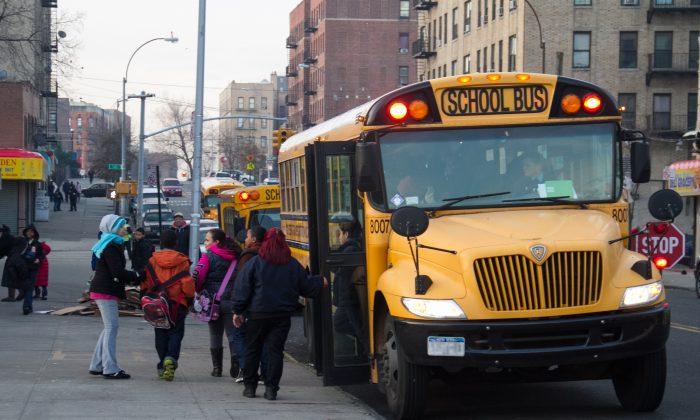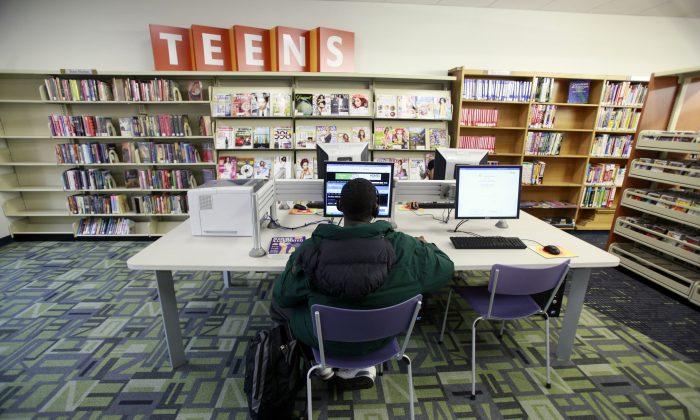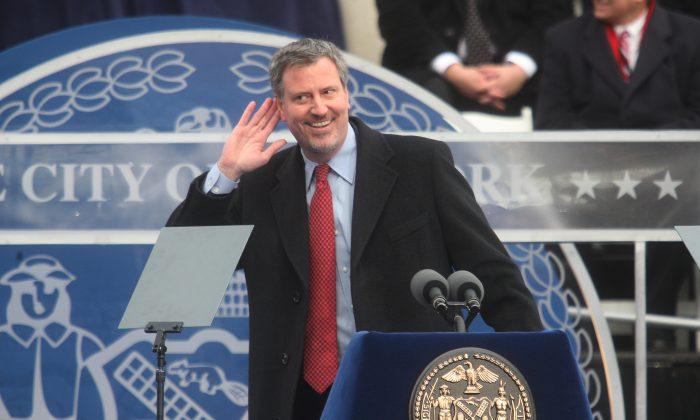Believe it or not, Detroit may not be the worst urban catastrophe in American history. In the 1970s, the South Bronx suffered a fate that resembled Detroit’s in its key features—crime, poverty, arson, blight, and abandonment. After hitting rock bottom around 1980, though, conditions in the South Bronx have improved dramatically. Nobody would call the area a paradise, but its recent history suggests that even extreme urban decay can be at least partially reversed.
Between 1970 and 1980, the South Bronx lost 41 percent of its population. Losses reached two-thirds in some neighborhoods, a steeper drop than Detroit experienced over six decades. Density worked against the South Bronx, as decay spread swiftly from neighborhood to neighborhood, overwhelming political authorities. Indeed, by the time New York City officials grasped how bad things were, “South Bronx” had become synonymous with America’s urban crisis. The NYPD’s 41st Precinct became widely known as “Fort Apache,” thanks to a 1981 Paul Newman film. In 1977, President Jimmy Carter visited rubble-strewn Charlotte Street, “perhaps the worst slum in America,” according to CBS News.
But since its 1980 nadir, population in the South Bronx has grown by 140,000, or 31 percent. Borough-wide, job numbers and property values have also increased, though at rates trailing those of Manhattan, Brooklyn, Queens, and Staten Island. The city’s crime turnaround has a lot to do with this resurgence, of course. The South Bronx has become much safer—to an extent barely imaginable a generation ago. In 2013, the 41st Precinct suffered just two murders, compared with more than 100 each year during its Fort Apache days.
Equally remarkable, and less well-noted, is the physical transformation of the area’s housing stock. In his foreword to Jill Jonnes’s South Bronx Rising, the late Daniel Patrick Moynihan observed, “The crisis of the South Bronx [was] elementally a crisis brought on by the destruction of rental housing.” Moynihan blamed government policy: rent regulation made it unprofitable for landlords to maintain their buildings, leading many to abandon them or burn them for the insurance money. Between 1960 and 1974, the number of annual fires in the Bronx tripled.
In 1985, under Mayor Ed Koch, New York launched a major housing initiative that would spend $5 billion on renovations and new construction, with the South Bronx being a prime location for the investment. Addressing homelessness and expanding the stock of affordable housing were the plan’s main goals, but the city also viewed the program as a way to save failing neighborhoods.
“We’re revitalizing parts of the city that over the past two decades have been decimated by disinvestment, abandonment, and arson,” explained the city’s Department of Housing Preservation and Development. Data from New York’s triennial Housing and Vacancy Survey show that less than 10 percent of South Bronx units are now located on streets with boarded-up or broken windows; in the early 1980s, two-thirds of units were on such blocks. Charlotte Street is now home to a subdivision of ranch houses that would not have been out of place in postwar suburbia.
Not a Market-Rate Recovery
All that new housing came at a cost, however: a market perhaps irreparably distorted by government involvement. Public, subsidized, and rent-stabilized and rent-controlled housing predominates in the South Bronx. According to NYU’s Furman Center, no more than 21 percent of rental units in the area’s six community districts are market-rate.
The South Bronx needs investment, to create more and varied housing options, as well as a more diverse socioeconomic profile. But that won’t be easy so long as the free market for residential real-estate development exists in such an undeveloped state. Government housing policy can help prop up a faltering neighborhood, but only at the expense of limiting possibilities for future growth.
While much safer, with improved housing stock, the South Bronx still suffers from a host of urban pathologies. The area’s 40.2 percent poverty rate is only slightly better than Detroit’s 41.5 percent. And 60 percent of households with related children are headed by single mothers, a figure that hasn’t budged in 30 years. Sixty percent of South Bronx residents are on Medicaid. Though the teen pregnancy rate has declined, drug addiction remains entrenched.
Can today’s symbol of urban decline, Detroit, learn from the South Bronx’s partial recovery? Detroit may not have hit rock bottom yet, it’s important to note. A city-commissioned study by Ernst and Young projects that property tax revenues and population will continue to decline through 2020 and 2029, respectively. At present, total population is down 63 percent from its 1950 peak.
Low density made Detroit’s decline more gradual than the South Bronx’s, but its physical size is now a major obstacle to revitalization—the city’s blight liability is estimated in the hundreds of millions, and police, fire, and emergency response times are far above national averages. Providing services under austerity budgeting conditions to a city built for twice its current population has left public safety and other municipal departments in triage mode. Many Detroit neighborhoods have not seen any growth for decades.
So far, private-sector investment in downtown Detroit is driving a renaissance, in contrast to the many failed government-directed efforts of the past—exemplified by Mayor Coleman Young’s elevated train, called the People Mover. (Private-sector groups’ main contribution to the South Bronx’s comeback consisted largely of devising novel ways to wring more funds out of the public sector.) But full revitalization would entail restoring health to the neighborhoods beyond downtown, though even better-off cities have often failed in that goal.
The most important lesson that Detroit can derive from the South Bronx’s experience is that things can get better. Many despaired over the South Bronx’s future during the 1970s out of conviction that New York City was ungovernable. How could a city incapable of preventing 14-year-olds from defacing subway cars be expected to revive a neighborhood resembling post-World War II Berlin?
But the skeptics were wrong, as more effective government—as opposed to simply less or more—proved central to New York’s epic crime decline and many other municipal improvements. As encouraging as the news is about its downtown, we'll know Detroit has turned a corner when local government has shed its reputation for dysfunction in the eyes of independent observers and, even more importantly, local taxpayers.
Stephen Eide is a Manhattan Institute senior fellow. This article originally appeared on the Manhattan Institute’s City Journal website.



Friends Read Free